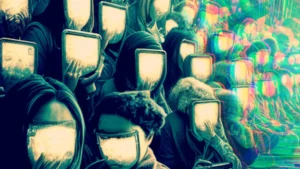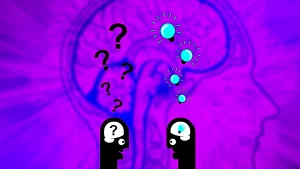
The integration of artificial intelligence (AI) into various industries is inevitable. White-collar professions, traditionally reliant on human expertise and ingenuity, are now facing a transformative shift. AI language bots, like OpenAI’s ChatGPT, Meta’s Llama, and Google’s Gemini, are steadily stepping into the realm of tasks once exclusive to human cognition.
At the forefront of this exploration is the fundamental question: How does AI integration affect the workforce and the nature of the work itself?
One aspect that emerges prominently is the dynamic between AI and creativity. Contrary to earlier assumptions, AI, when harnessed effectively, demonstrates surprising capabilities in tasks that were once thought to be exclusive to human creativity. In brainstorming sessions and creative ideation, AI-assisted individuals showcased marked improvements in output quality and speed. However, the reliance on AI alone, without blending human thought, has raised intriguing observations about the nature of creativity in collaboration with machines.
One such innovation is the emergence of language bots, designed to assist in various white-collar tasks ranging from creative brainstorming to analytical work. These AI-driven tools, like ChatGPT and its counterparts, possess the capability to revolutionize how we approach our work, promising efficiency and speed like never before.
At first glance, the prospect of accomplishing complex tasks in a fraction of the time can be exhilarating. Professionals across industries have embraced these tools, recognizing their potential to amplify their capabilities. However, the initial enthusiasm often gives way to a nuanced reality.
Moreover, beyond the realm of productivity, the emotional and psychological impact on the workforce cannot be ignored. The unease and concerns voiced by individuals regarding the potential atrophy of their creative abilities, the redefinition of their professional identity, and the fear of overdependence on AI reflect the nuanced, human side of this technological transformation.
The integration of AI in professional settings has unveiled a spectrum of emotions among workers. While some celebrate the newfound efficiency and the ability to produce high-quality output at an accelerated pace, others grapple with a sense of unease. The rapidity with which these tools execute tasks challenges the notion of skill and expertise, leading to apprehension among those who’ve honed their craft over years of experience.
But the story isn’t solely one of seamless integration. As much as AI amplifies certain aspects of work, its influence on analytical tasks poses significant challenges. Tasks demanding reasoning based on evidence or complex data interpretation revealed the limitations of AI, pointing to potential pitfalls when unquestioningly relying on AI-generated insights. The allure of polished AI output led some to overlook the crucial step of critical analysis, raising concerns about misplaced trust in AI-generated information.
Moreover, as these tools evolve, so too do the ethical and professional considerations surrounding their use. The reliance on AI for critical decision-making or analytical tasks introduces complexities. Studies hint at the potential pitfalls—while AI excels in certain areas, its performance in tasks requiring human reasoning or interpretation of nuanced data might fall short.
Additionally, concerns about the impact on professional identity emerge. The fear of overreliance on AI and its subsequent effect on one’s creativity and problem-solving abilities becomes a topic of contemplation for many. The balance between leveraging these tools for augmentation and preserving the core competencies that define a skilled professional poses a significant challenge.
The ongoing discourse about AI’s impact on work and workers serves as a reminder of the need for continuous learning and adaptation. Studies exploring these dynamics shed light on the complexities involved, emphasizing the necessity for a thoughtful approach to the integration of AI in our professional endeavors.
The future undoubtedly holds a space for AI and its transformative capabilities. How we navigate this journey, leveraging technology while preserving the essence of skilled workmanship, will define the evolution of work in the years to come.
These studies serve as a compass, guiding us toward a balanced integration of AI into white-collar work. They underscore the importance of a symbiotic relationship between human expertise and AI assistance, where each complements the other’s strengths and compensates for their respective limitations. Instead of viewing AI as a replacement, envisioning it as a powerful tool to augment human potential and efficiency could pave the way for a more harmonious future.










